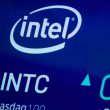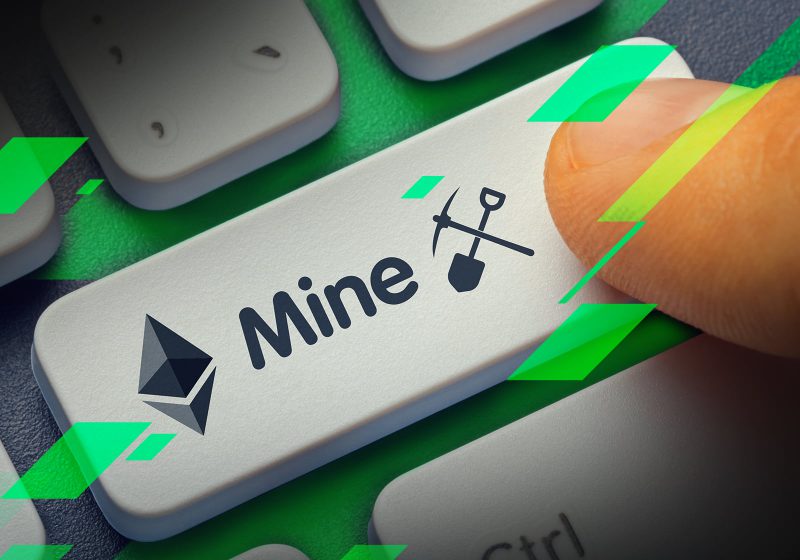Ethereum (ETH) is the second-largest crypto project in the world, only behind the original cryptocurrency, Bitcoin (BTC). Ethereum has been at the forefront of many innovative movements. They were the first to bring smart contract capabilities to the crypto space, which ushered in a vast array of applications such as Dapps (decentralized apps) and NFTs (non-fungible tokens).
Just like Bitcoin, to construct and verify each batch of transactions (i.e., a block) within the Ethereum blockchain, the platform requires a global system of computers. Computational power is rewarded with ETH tokens, consequently called mining.
Although Ethereum is moving to a Proof-of-Stake (PoS) consensus model, which will make mining obsolete, the firm has yet to finalize the launch date. Many speculate that it could happen sometime later this year, or perhaps in early 2023. Until then mining is still an important aspect of the Ethereum (ETH) network.
Let’s take a look at how one can get on board to become an Ethereum miner.
Step 1: Which type of Ethereum mining is for you?
The first step is to decide what type of mining would best suit the user. There are three different ways to mine Ethereum at the moment.
Pool mining: The most straightforward approach to mining ether is to join a pool, especially if you don’t have much hardware. That’s because, as more currencies have entered circulation, mining Ethereum has become more difficult and time-consuming. Pool mining enables miners to pool their computer power in order to solve Ethereum blocks faster. As a result, the rewards are divided among the group based on the amount of power contributed, which is measured by hash power.
Solo mining: Solo mining is more difficult and needs a lot of computing power. You’d need a farm of complicated mining rigs powered by hundreds of graphics cards to tackle riddles in a reasonable period of time by yourself. It’s critical to think about the financial and spatial repercussions if you go this route. You should consider aspects such as ventilation, noise, electrical costs, and physical space in addition to the equipment cost, which may be hundreds if not tens of thousands of dollars.
As a result, solo mining is usually only recommended for experienced miners who are willing to invest a considerable amount of money. However, because you would eliminate costs and shared earnings, this technique may be more profitable in the long term.
We will get into how one can actually set up a solo mining rig later on in the article.
Cloud mining: In terms of entrance barriers, cloud mining is usually the simplest mining method. You won’t need to invest in a high-end machine or dedicate your personal computer to mining if you use this method. Instead, you hire another miner to mine coins for you for a price upfront. They’ll conduct the mining, and you’ll get the freshly minted money. Renting another miner’s computer power, on the other hand, comes with its own set of hazards, including scams and fraud.
Step 2: Create a crypto wallet
Wallets can be divided into two categories: hardware wallets and software wallets.
Hardware wallets, often known as “cold wallets,” are actual devices that keep the private keys to your crypto accounts offline. They frequently resemble high-tech USB drives.
Software wallets are software applications that store your cryptocurrency and are often accessed via an internet connection. Both public and private keys are available in these wallets.
Wallets, regardless of their type, have two vital keys that serve different purposes. The first is a public key, which enables other people to transact with your wallet. The second is a private key that allows you to access your wallet. You must protect your private key, as the name implies, or otherwise, someone else could gain access to your funds.
In order to mine Ether, you will need an Ethereum wallet. You’ll get a public key once you open a wallet, which you can use during the mining configuration procedure. If you join a mining pool, for example, you’ll be able to link your wallet and receive regular currency distributions based on your hash power contribution to the pool.
Step 3: Hardware and software requirements
Mining cryptocurrency necessitates a significant amount of computing power. So, if you want to mine ether for profit, you’ll need a powerful computer. Your system setup is mostly determined by the mining method you select.
If you plan on becoming a casual miner or joining a mining pool you will not require a very heavy system.
You’ll need Ethereum mining software, as well as a computer or dedicated mining equipment with one or more graphics processing units (GPUs). These can differ in terms of usefulness and convenience of use. You will also need GPU drivers, which allow your graphics card and operating system to communicate. Keep in mind that your GPU needs to have openCL.
If you want to be a hardcore miner and go solo, you’ll need to set up a significant amount of money for equipment, not to mention physical storage space. While GPU mining is still an option, you might want to think about a more expensive but perhaps more efficient alternative: Application-Specific Integrated Circuit (ASIC) mining.
ASIC mining machines are made exclusively for mining cryptocurrency. As a result, they have a tendency to create greater processing power and solve blocks faster. There are, however, trade-offs. ASICs can cost tens of thousands of dollars, making them prohibitively expensive for the average miner. ASICs can also use a lot more power than GPUs, resulting in higher electricity expenses.
Furthermore, whereas GPUs can mine any coin, ASICs are tailored for a specific coin, such as Ethereum or Bitcoin.
Step 4: Choosing an Ethereum mining pool
A mining pool is the simplest method to get into crypto mining unless you’re ready to invest tens of thousands of dollars in equipment.
Pool structure might differ in terms of pool size, hashrate, payment, and fees. Ethermine, for example, has over 400,000 active miners as of this writing, whereas 2miners has over 80,000. This has an impact on the pool’s block-solving pace and, as a result, on its payout. However, there are more than two pools to choose from, and PoolWatch can help you compare and monitor active Ethereum mining pools.
Step 5: Getting started with solo Ethereum mining
To mine ETH, you will need the mining software, geth, and ethminer. To install the mining software, first, make a new folder called “Ethermining” on your data carrier (C:). The Ether Mining Software should be saved in this folder.
Install “Ethminer” after downloading both programs. As a memory location, select the new folder “Ethermining.”
The file “Ethereum” can be found in the file “Ethermining” after successful installation. After downloading the Stratum Proxy, you merely need to unpack it. Drag and drop the “eth-proxy” folder into the “Ethermining” folder.
Once the installation is complete, we can move on to configuring your account. You need to create an Ether account (Etherbase or Coinbase) in order to receive your earned ETH. For this, we need to use the “geth” software.
To create a new Ether account, navigate to the application “geth” in the command prompt window and type the following commands one by one, confirming each with the “Enter” key.
- cd/ (Enter key)
- cd Ethermining (Enter key)
- geth account new (Enter key)
You will now be prompted for a password, which will be the same as the password for your Ether Wallet. Please notice that when typing in the prompt box, you will not see any characters. You must repeat the password after typing it the first time. Keep in mind that each entry must be confirmed with the Enter key. Keep a note of your password somewhere other than your computer. Every time you wish to send Ether, you’ll need this password.
The blockchain will be downloaded in the next step. The blockchain currently has 1.222.000 blocks and is more than 11 GB in size. The recent block number may be seen on www.etherchain.org under “Recent blocks.” The download can take anywhere from a few hours to a few days. You cannot, unfortunately, skip this stage.
Create a new prompt window in the same manner as explained above. To download the Blockchain, type the following commands and hit the Enter key to confirm each one.
- cd/ (Enter key)
- cd Ethermining (Enter key)
- geth –rpc (Enter key)
After downloading the entire Ether Blockchain, you can begin Ether mining.
During Ether mining, make sure the prompt window in which the Blockchain is downloaded is constantly open. To begin Ether mining, open a new prompt window and type the following commands one by one, confirming each with the Enter key:
- cd/ (Enter key)
- cd Ethermining (Enter key)
- cd Ethereum (Enter key)
- ethminer -G –cl-local-work 256 (Enter key)
The DAG file is installed first after entering the commands. This could take a few minutes. The Ether Mining process then begins. Close this window and enter the commands again in a new prompt window if this does not work. In command 4, only type ethminer -G.
Is Ethereum mining still profitable in 2022?
The short answer is yes, but only for now. Although Investing in heavy equipment may be the wrong direction as Ethereum moves into its PoS stage. Ethereum developers and others in the crypto sector are concerned that not everyone is aware of the huge revamp, and that some people may still be investing thousands of dollars in mining equipment in a method that will soon be obsolete.
Ethereum developer Tim Beiko said,
“I am more concerned about the people who don’t even know this is happening, and they buy this $3,000 miner, and three months later it stops working,”
He further went on to say that it would be a bad idea to start mining today.





